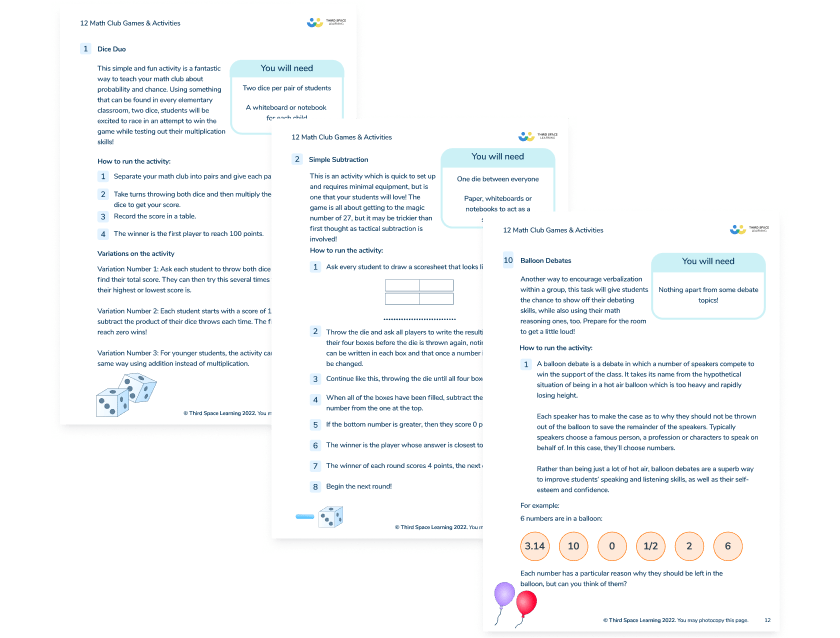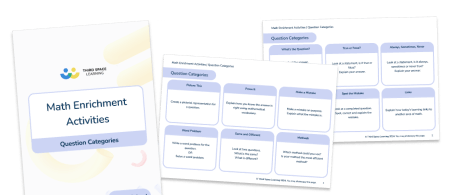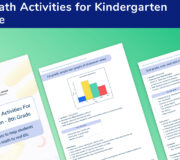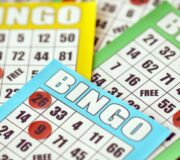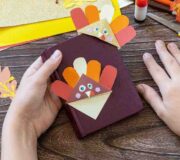13 Fun Outdoor Math Activities For Kids
Check out our favorite outdoor math activities to enjoy with your elementary and middle school class; most of these are entirely adaptable for any year from kindergarten upwards.
Once the end of spring semester arrives, bringing the summer holidays closer, you may be taking time to reflect on the progress that you and your students have made in math this year. You may also be thinking about your plans for the summer…BBQs, camping trips and vacations abroad anyone?
Whether they’ll be heading into 5th grade next year, or they are just developing an awareness of number in pre-K, help your students continue their progress by getting them in the habit of doing some outdoor math activities so that wherever they are, (and wherever you are) they can be keeping up their number sense, angles and bar graphs.
Your students can complete the activities outside while basking in the summer sun, practicing key math topics without even knowing it – our favorite form of “stealth learning”.
Math Enrichment Activities
12 different types of enrichment questions for elementary students with an explanation of what to each question and a teacher guide.
Download Free Now!
1. Find a math connection
There are lots of structured activities that you can plan outdoors, but why not start off by giving your students a more exploratory activity that challenges them to make links between things in the outdoor environment and math (e.g. Look around you. What can you see that has a mathematical connection? Write or draw any mathematical words or shapes in and around the space you are in. Write your ideas down in words or draw a mathematical calculation.) This helps students to start making connections with the work they do in class and how it connects with the real world.
2. Playground problem questions
Write some word problems that require the children to explore the outdoors to find all the information they need to answer the question.
E.g. Find a picnic table. How many legs does it have?
How many legs would there be on 5 picnic tables?
If there were 44 legs, how many picnic tables would there be?
Or, it costs $1 for every two meters of painted lines on the school playground. How much would it cost to draw the line all the way round the basketball court?

Meet Skye, the voice-based AI tutor making math success possible for every student.
Built by teachers and math experts, Skye uses the same pedagogy, curriculum and lesson structure as our traditional tutoring.
But, with more flexibility and a low cost, schools can scale online math tutoring to support every student who needs it.
Find out more
3. Get the chalk out!
All you need for this is some playground space and some chalk. In Pre-K and Kindergarten, it’s a great way to explore cardinal numbers, with children drawing a different number of items. For 3rd – 5th graders, you can reinforce data and statistics by creating large-scale bar graphs, and Venn diagrams.
You can make it more interactive by getting the children to stand in the correct place or sort different items they find in nature into different categories.
4. Go on an angle hunt
If you are introducing right angles, make a template such as these then get out and about to see if children can spot right, acute and obtuse angles in their environment.
In 4th grade, why not get the students to take accurate measurements of angles on the playground, then get them to create their own map with missing angles to challenge their partner, which they can then mark themselves.
During your angle hunt, you could also integrate some discussion about the use of horizontal, vertical, perpendicular and parallel lines.
5. Surveys
Step outside the playground and observe cars and other traffic on a nearby road. Give younger students categories to collect data on or challenge older ones to come up with their own questions to answer e.g. what is the most common color car? Students should gather the information and then have a go at representing it in different ways.
6. Plan and run Fall Festival activities
Not necessarily outdoors but a great inspiration for math activities in the summer time nevertheless! Get your students into groups and challenge each of them to plan an activity for your school Fall Festival.
There are lots of opportunities to integrate math e.g. weighing ingredients to make cakes for a cake stall, working out totals and giving change on the day, totaling scores for participants in any games, recording the popularity of different stalls on the day, and presenting the data…
7. Fun and games
There are lots of different playground games that can be used to reinforce number facts. One which works well is to get the students to run around and then when you blow a whistle shout out the size of the group they have to get into.
You can extend this by saying “get into a multiple of 3” or “get into a squared number” or “get into a factor of 24”. Alternatively, you could try “there must be 30 fingers in each group” or “there must be 16 arms and legs in each group”
8. Position and direction
Get students into teams and then challenge them to direct their teammates around the playground using only turns (turn 90s clockwise, turn 180 anticlockwise) along a particular route. Make this harder by blindfolding the person following the instructions or setting obstacles for students to avoid.
9. Spot the shapes
Send the children out with a list of shapes to spot outside. See if younger students can spot any regular polygons. Students who are struggling may be given a prompt sheet to help them. See if older students can spot any 3D shapes, explore their properties and report back to the class.
If you have digital cameras or tablets, you could even get them to take photos and present the info back to class for a good cross-curricular link to Computer Science.
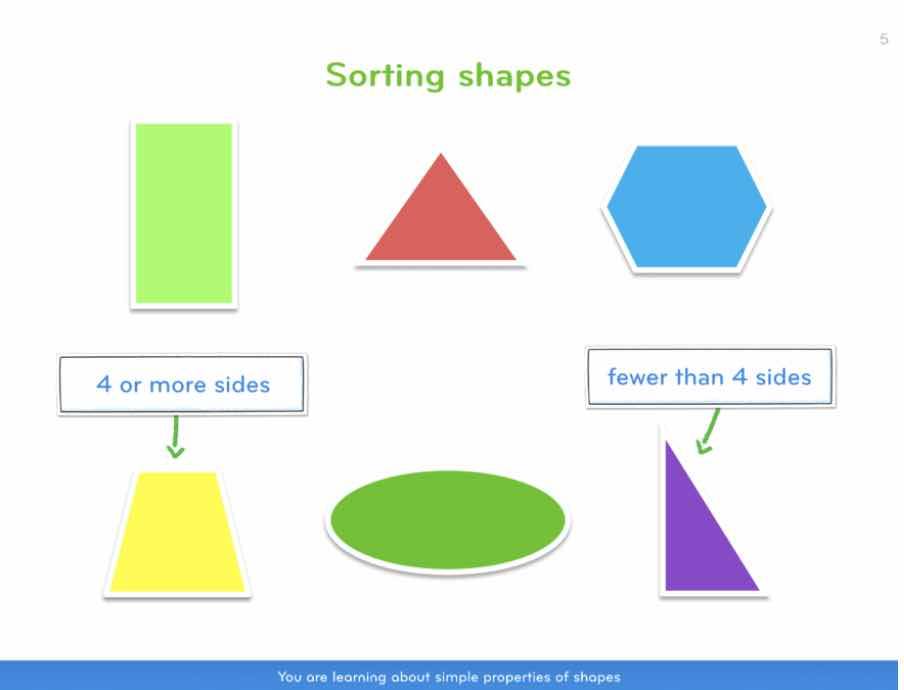
10. Ball games
In pairs, students can throw and catch a ball. Each time a successful catch is made they count up in a particular multiple. If they drop the ball they have to go back to the start. You can make this more of a competition by setting a time limit and seeing which pair can get to the highest multiple.
With children who are struggling more, you might want them to throw the ball around a circle and give a bit more support.
11. Measuring
There are numerous potential opportunities for measuring experience outdoors. After reviewing different units of length, why not practice estimating by getting students to estimate the length of different parts of the playground, height and width of different bits of playground equipment, or the distance from one particular spot to another.
Then use rulers, tape measures, and meter sticks to take accurate measurements. You can also get students to practice subtraction by getting them to calculate the difference between their estimate and the real measure.
You could explore measuring with lower elementary students by using non-standard measures e.g. how many students long is the playground? How many hands high is the bench?
12. Make shapes
Children could explore making 2D shapes in two ways: with their bodies, e.g. lie on the floor to make a triangle, or using large loops of string/ribbon. The string method is better for 4th and 5th graders, so you can look more closely at the angles, e.g. make a right-angled triangle, make an isosceles triangle, make an irregular pentagon.
13. Target Games
Set a target and allocate a particular score for each area that the student is able to throw a beanbag into. Students can have clipboards and be responsible for recording scores and adding them up.
This is easily adaptable from K-5: using single digit numbers for, move on to multiples of 10, 20 and 100 or challenge with a mixture of 3 or 4 digit numbers for upper elementary.
You could even get them to add decimal numbers. Why not challenge each team to calculate their average score at the end?
Looking for more? We’ve got lots more fun math activities here for you, including 19 fun end-of-year math activities, some great back to school math activities and our favorite fun math lessons.
Bonus activity: Spot Patterns
Encourage your students to look for patterns either in nature or on buildings. Ask them to describe the patterns. What shapes do they use? Do they tessellate? How often do they repeat? Younger children can engage with this one just as much as 4th and 5th graders (although you may struggle with the tessellate question… )
Read more:
Do you have students who need extra support in math?
Skye—our AI math tutor built by experienced teachers—provides students with personalized one-on-one, spoken instruction that helps them master concepts, close skill gaps, and gain confidence.
Since 2013, we’ve delivered over 2 million hours of math lessons to more than 170,000 students, guiding them toward higher math achievement.
Discover how our AI math tutoring can boost student success, or see how our math programs can support your school’s goals:
– 3rd grade tutoring
– 4th grade tutoring
– 5th grade tutoring
– 6th grade tutoring
– 7th grade tutoring
– 8th grade tutoring
The content in this article was originally written by a former secondary teacher David Leighton and has since been revised and adapted for US schools by elementary math teacher Christi Kulesza.
